Mungo National Park, located in New South Wales (NSW), is a breathtaking destination that showcases Australia’s natural wonders. It is nestled in the southwest region of the state and offers visitors the chance to discover ancient mysteries, captivating geology and a deep connection to the continent’s Indigenous heritage.
As a UNESCO World Heritage-listed site, Mungo National Park is not just a place to visit, but a journey through time. It provides a glimpse into Australia’s history and a portal to a landscape that has witnessed millennia. Our complete guide aims to uncover the hidden treasures of this remarkable park and provide practical insights to make your visit an unforgettable adventure.
So, if this is a place you would be interested in heading to, join us as we reveal everything you need to know about visiting Mungo National Park in NSW.
History and Cultural Significance
Mungo National Park is of immense cultural and historical importance to Australia’s Indigenous communities, particularly the Paakantyi, Ngyiampaa, and Mutthi Mutthi people. The park is known as ‘Balranald’ in the local Aboriginal languages, and Indigenous peoples have inhabited it for over 40,000 years. The significance of Mungo lies in its ancient heritage, including the discovery of Mungo Man and Mungo Lady, some of the oldest human remains found in Australia.
In the 1960s and 1970s, the discovery of Mungo Man and Mungo Lady and burial sites revolutionised our understanding of Australian history. Radiocarbon dating suggests that Mungo Man lived around 42,000 years ago, making him one of the world’s oldest known cremated individuals. These discoveries have shed light on the ancient cultural practices and traditions of Indigenous communities in the region.
The park’s history also includes European settlement, which began in the 19th century when pastoralists and graziers moved into the area. They used the land for sheep farming, and remnants of old homesteads and shearers’ quarters can still be seen within the park.
Geology and Landscapes
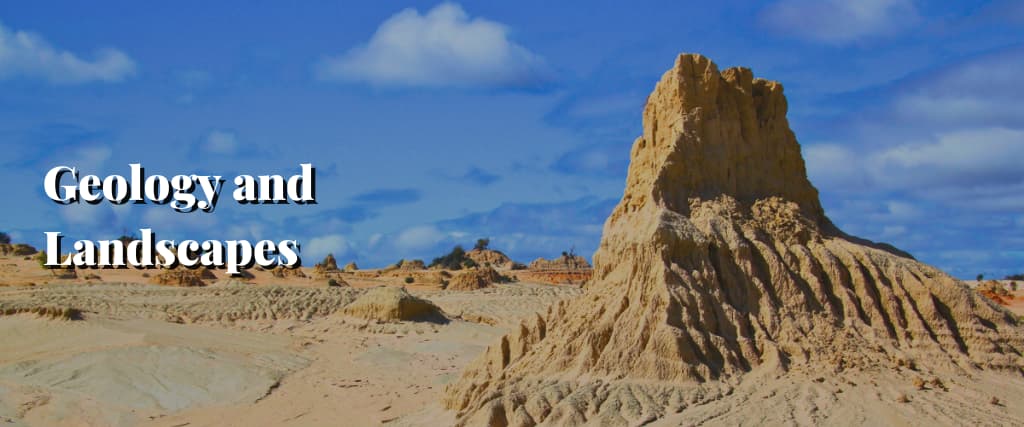
One of the most iconic features of Mungo National Park is the striking crescent-shaped sand dune known as the Lunette. Wind and water have shaped This unique geological formation over thousands of years. As you explore the park, you’ll marvel at the layers of colourful sediments exposed by erosion. The Lunette is a photographer’s dream, especially during sunrise and sunset when the landscape comes alive with a warm, golden glow.
The Walls of China are another geological wonder within Mungo National Park. These ancient, undulating dunes stretch for kilometres, forming a dramatic natural border. The dunes are composed
of white and grey clays, creating a visually striking contrast against the surrounding landscape. Erosion has carved unique patterns and gullies into the dunes, making it a fascinating site to explore. Keep your camera handy – you won’t want to miss capturing the beauty of the Walls of China.
Lake Mungo, or Lake Arumpo as it is known to the local Indigenous people, is a further significant feature of the park’s landscape. This ancient lake bed has dried up over thousands of years, leaving behind a vast expanse of clay and sand. The lake bed contains significant archaeological and cultural sites and evidence of past megafauna and early human occupation.
Flora and Fauna
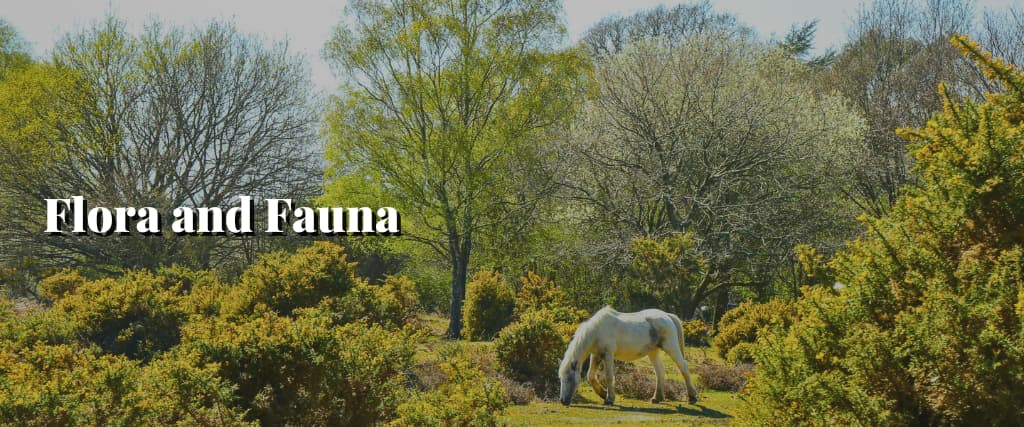
In the unique ecosystem of Mungo National Park in NSW, a fascinating collection of flora and fauna have adapted to the park’s semi-arid environment.
Sturdy and resilient, the park’s vegetation is a testament to nature’s ability to thrive in challenging conditions. Here, you’ll find hardy shrubs like saltbush and fragrant eucalyptus trees, providing critical shelter and sustenance to the park’s diverse wildlife.
As you explore the park, keep an eye out for iconic Australian fauna, including the stately red kangaroos, the enigmatic emus with their distinctive blue skin, and a vibrant tapestry of birdlife featuring wedge-tailed eagles soaring above, galahs playfully flocking together, and the colourful Mallee ringneck parrot gracing the skies.
Moreover, you may spot various reptiles, from the sunbathing blue-tongued lizard to the occasional snake making a discreet appearance, all contributing to the rich tapestry of life that thrives amidst Mungo’s ancient landscapes.
Things to Do and See
Visitors to Mungo National Park have plenty of sites and activities available to them. Whether you’re a history buff, nature lover, or avid photographer, there’s something here for every explorer seeking to make the most of their visit to this Australian gem.
While you might not be able to visit or experience all of them, here are some of the best things to see and do during your visit to Mungo.
Self-Guided Walks
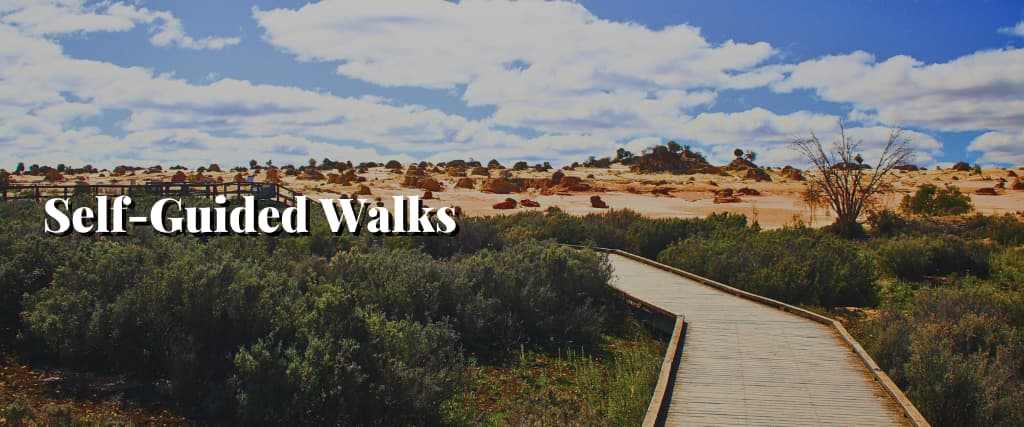
Mungo National Park offers a range of self-guided walks that cater to different fitness levels and timeframes. Here are a few of the most popular:
Mungo Lookout Walk: This easy, wheelchair-accessible walk provides panoramic views of the park’s unique landscapes. It’s an excellent choice for those seeking a gentle introduction to Mungo’s wonders.
Zanci Homestead Loop: Explore the remnants of the historic Zanci Homestead as you follow this 2.5-kilometre loop. Interpretive signs along the way offer insights into the region’s European history.
Red Top Lookout Walk : For a more challenging hike, tackle the Red Top Lookout Walk. This 2-kilometre loop leads you to a lookout point with breathtaking views of the Walls of China.
Guided Tours
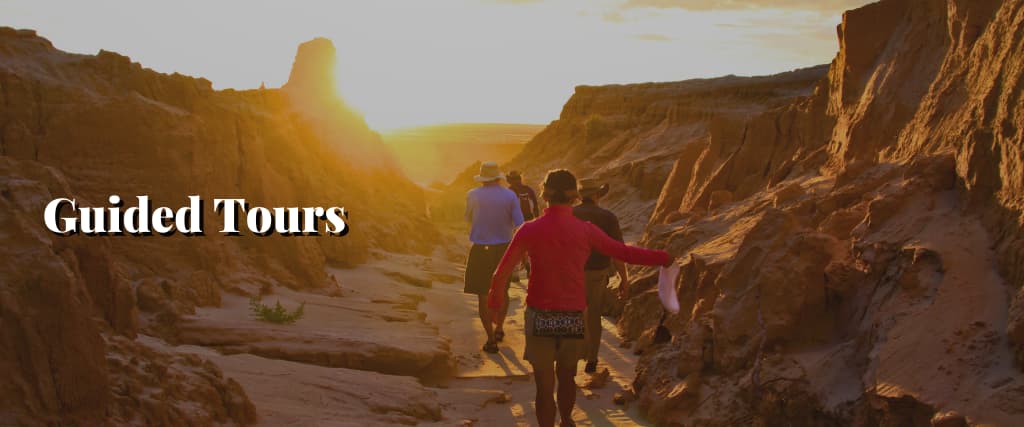
To enhance your Mungo experience, consider joining a guided tour led by knowledgeable park rangers or local experts. These tours provide deeper insights into the park’s history, geology, and cultural significance.
Led by Indigenous guides, these tours offer a unique opportunity to learn about the park’s rich cultural heritage from those who hold it closest to their hearts. You’ll gain a deeper understanding of the land’s significance and the traditions of its original custodians.
Photography

Whether you’re a professional photographer or a hobbyist with a smartphone, Mungo National Park provides endless opportunities for capturing stunning images. The unique landscapes, striking colours, and abundant wildlife make it a photographer’s paradise. Here are some photography tips for capturing the beauty of Mungo National Park:
Sunrise and Sunset: The soft, warm light during sunrise and sunset creates a magical atmosphere in Mungo National Park. Be sure to arrive early and stay late to capture the best lighting conditions. The play of light on the Lunette and the Walls of China is particularly enchanting during these times.
The Golden Hour: The hour just after sunrise and just before sunset is often referred to as the ‘golden hour’ for photography. During this time, the light is soft, and diffused, and bathes the landscape in a golden hue. It’s the ideal time to capture the intricate textures and colours of the dunes and lake beds.
Wildlife Photography: For wildlife enthusiasts, Mungo offers excellent opportunities for wildlife photography. Be patient, move quietly, and use a telephoto lens to capture detailed shots of kangaroos, emus, and the park’s birdlife. Keep a respectful distance to avoid disturbing the animals.
Camping
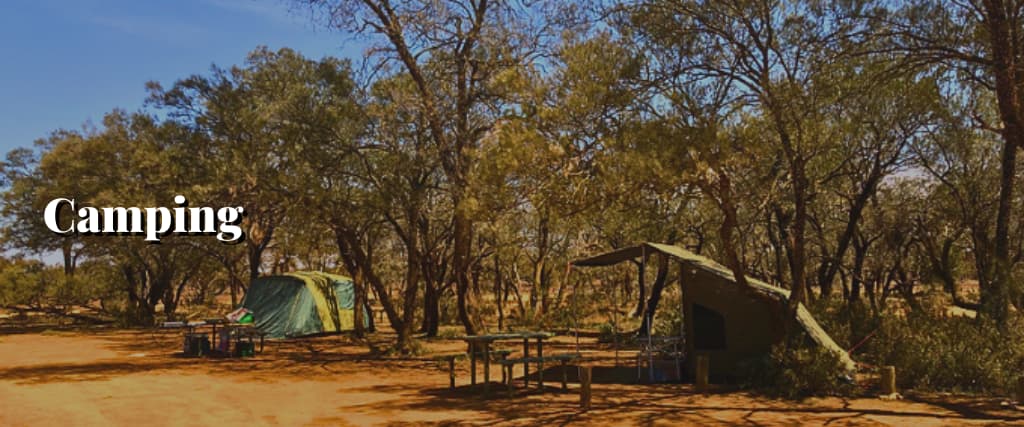
When it comes to overnight accommodation, Mungo National Park offers several campgrounds, allowing you to immerse yourself in the park’s natural beauty. These camping options include:
Main Campground: Located near the visitor centre, the Main Campground offers basic facilities such as toilets, picnic tables, and fireplaces. It’s a great choice for those who prefer easy access to amenities.
Belah Campground: For a more secluded camping experience, consider Belah Campground. It’s
smaller and offers a quieter setting amidst the park’s natural surroundings. Facilities here are more basic, so be prepared for a more rustic experience.
Mallee Campground: Mallee Campground is situated near the Walls of China and offers a unique camping experience. The campground is less developed, so you’ll need to be self-sufficient and carry in all your supplies. However, the proximity to the Walls of China is a major draw for nature enthusiasts.
Best Time to Visit
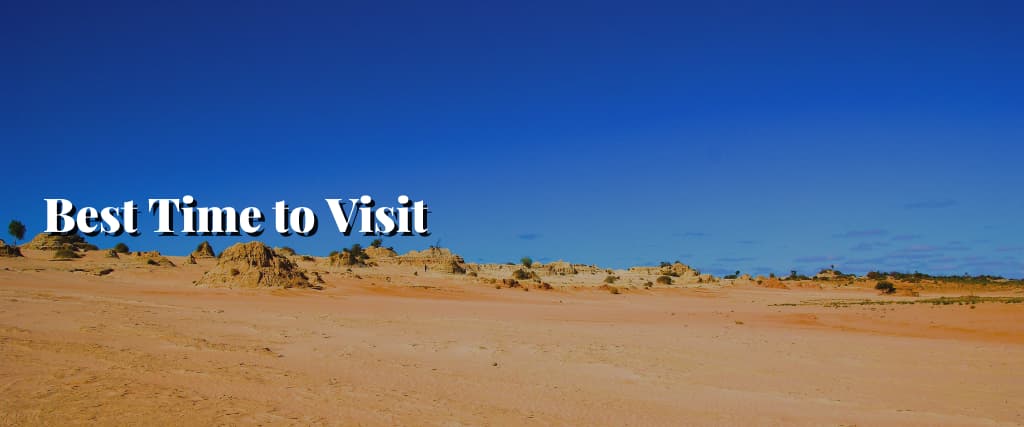
Mungo National Park is open year-round. Arguably, there is no ‘best time’ to visit the park, rather just the best time for you.
In terms of the different seasons, spring (September to November) brings mild temperatures and wildflower blooms, adding vibrant colours to the landscape. So, for many people, this is the preferred time of year to come.
Similarly, Autumn (March to May) is a popular option as the temperatures are still mild and the crowds are less.
If you want to take advantage of the school holidays, the summer months of December to February are an obvious time to visit the park. However, summers can be scorching, with temperatures exceeding 40°C (104°F). If you visit during this time, be prepared for extreme heat and pack accordingly.
By contrast, the winter months of June to August can be very cold, with the mercury often dropping to freezing at night. However, if you can stand the cold, it is an excellent time for stargazing, as the skies are often clear.
Whenever you choose to visit Mungo National Park, be sure to pop into the visitor centre, where you can obtain maps, brochures, and information about the park’s history, geology, and activities.
Rangers may also be available to answer questions you may have and provide general guidance.
Getting There
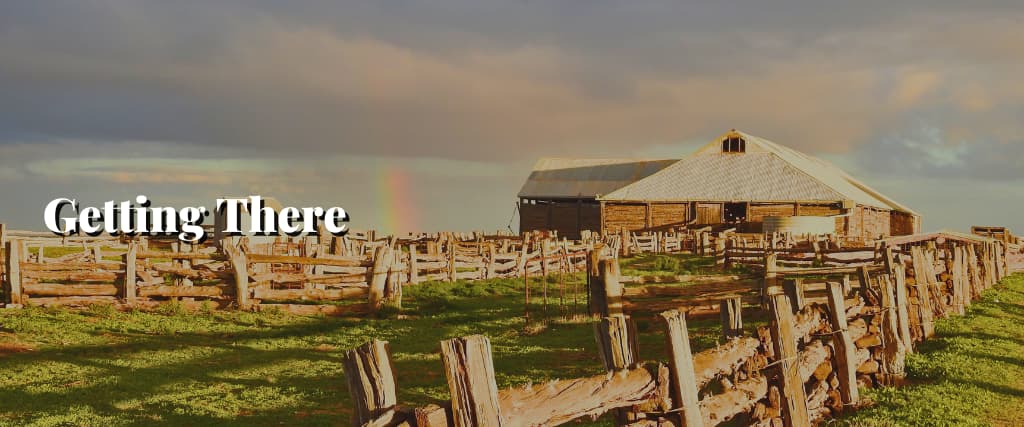
Reaching the captivating Mungo National Park in New South Wales is an adventure in itself. Located in the southwestern region of the state, the park offers multiple access options.
By car, journey from Sydney through the M8 and Sturt Highway or from Melbourne via the Calder Highway. If you’re starting from Adelaide, the Mallee Highway will guide you.
Mildura Airport is the nearest major hub for those flying in, with rental cars available for onward travel. While there are no direct bus services, you can reach Mildura by bus from various cities and then explore the park by car or tour.
Additional Considerations
When visiting Mungo National Park, here are some things you should bear in mind:
Accessibility
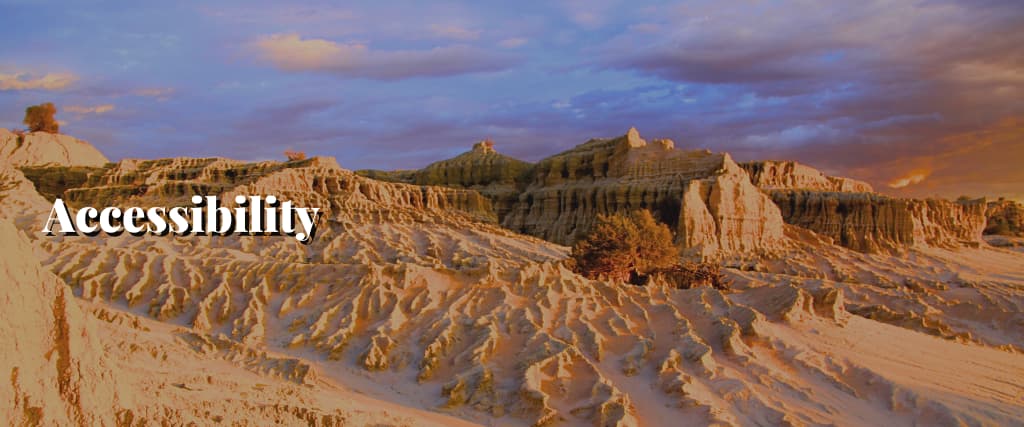
Mungo National Park is generally accessible to most visitors, with some areas suitable for wheelchair users. The Mungo Lookout Walk, for instance, is wheelchair-friendly. However, some trails and tracks may be challenging for those with mobility issues due to uneven terrain.
Camping Reservations
If you plan to camp in Mungo National Park, it’s advisable to make reservations, especially during peak seasons. You can book campsites online or contact the park’s visitor centre for availability and information.
Supplies and Amenities
While there are basic facilities at the Main Campground, including toilets and picnic tables, the park is relatively remote. Ensure you have enough supplies, including food, water, and camping equipment, to make your stay comfortable.
Leave No Trace
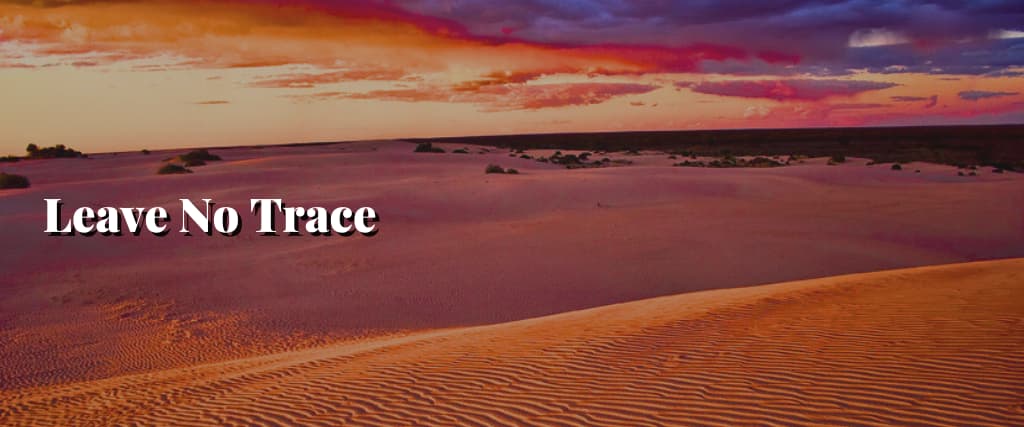
Follow Leave No Trace’s principles to minimise your environmental impact. Pack out all trash, respect the flora and fauna, and avoid disturbing cultural or natural features.
Permits for Research and Photography
You may need special permits if you plan to conduct research or commercial photography within Mungo National Park. Contact the park’s management for details on obtaining the necessary permits.
Weather Considerations
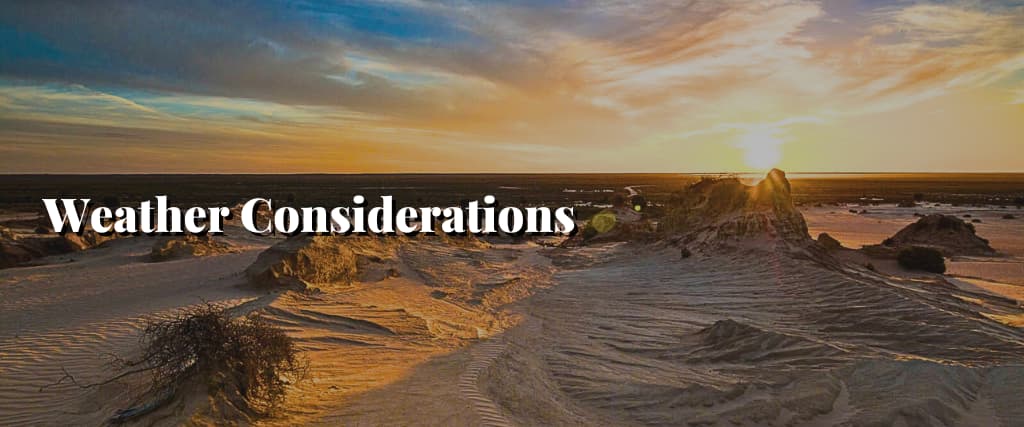
Check the weather forecast before your visit and be prepared for a range of conditions. Summers can be scorching, while winters can be cold, especially at night. Dress in layers and bring appropriate clothing for the season.
Guided Tours
Consider joining guided tours to enhance your experience and better understand the park’s cultural and natural significance. These tours can provide valuable insights and access to areas not open to the general public.
Conclusion
Mungo National Park in New South Wales has a beauty, rich history and cultural significance, you’ll struggle to find elsewhere.
From its ancient geological formations to its vibrant flora and fauna, Mungo offers visitors a truly unique and unforgettable experience. If you’re a naturist, a history buff, or a stargazer, you’ll love the opportunities this park presents you with.
As you plan your visit to Mungo National Park, remember to respect the land’s environment and Indigenous heritage. Take the time to explore the self-guided walks, join a guided tour, capture stunning photographs and immerse yourself in the timeless landscapes of this remarkable place.
Ultimately, Mungo National Park is more than just a destination; it takes you on a journey through time and celebrates Australia’s natural and cultural heritage.
